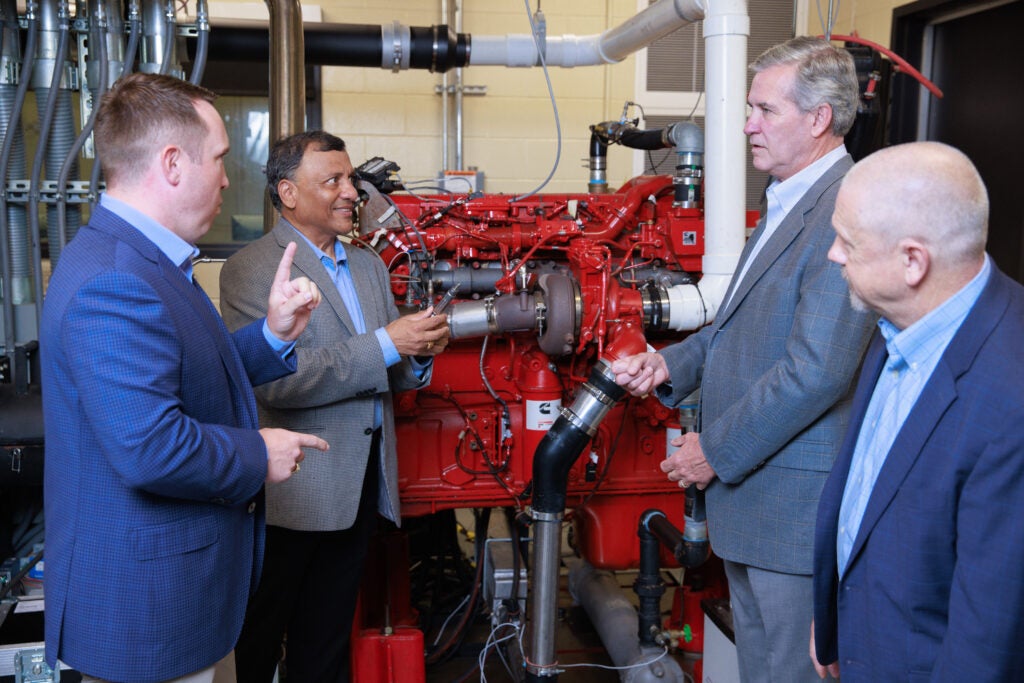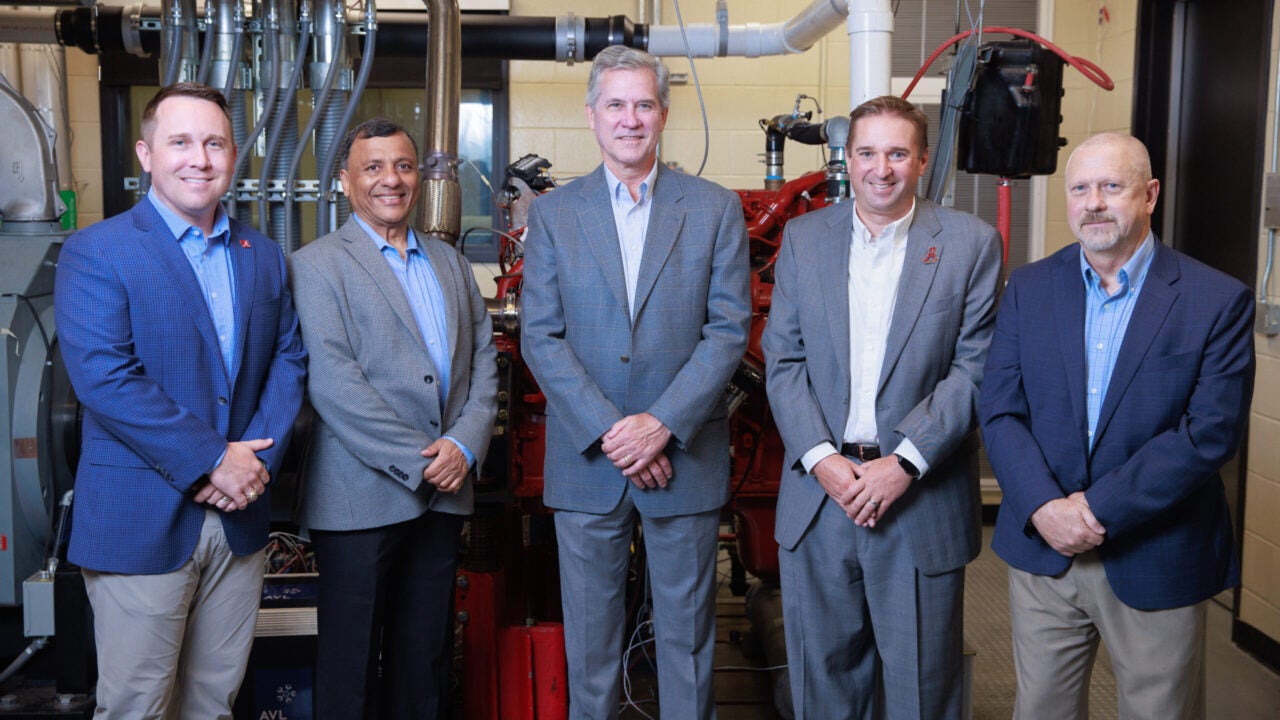TUSCALOOSA, Ala – Large diesel trucks supply the country with essential goods like lifeblood flowing out through narrowing capillaries, even to the smallest towns. Over the years, technology has curbed the black plumes of pollutants that used to belch into the air as a truck passed. Researchers at The University of Alabama believe diesel engines can be further improved to save money and reduce emissions, especially at idling conditions.
With a $4 million grant from the United States Department of Transportation, Dr. Ajay Agrawal, Robert F. Barfield Endowed Chair in mechanical engineering and Dr. Joshua Bittle, associate professor of mechanical engineering and associate director of the Center for Advanced Vehicle Technologies, will develop and test a novel diesel-engine technology in collaboration with the Alabama Port Authority. The technology has potential to reduce idle emissions, save on operating costs, and improve efficiency in diesel trucks.
Diesel Emissions at Idle
Agrawal and Bittle will be adapting previous research to address the problem of air quality at U.S. ports. Emissions from idling diesel engines are an issue not only at the port of Mobile but at seaports—and communities near them—worldwide.
Designed for hauling power, diesel engines operate best and most efficiently on the highway. After-treatment systems help curtail emissions, but these systems can be expensive, high maintenance, and inefficient. Furthermore, after-treatment systems work poorly at idling conditions, allowing more pollutants into the air.
Current attempts to solve the problem have focused on cutting off the engine when the truck is waiting, but this has a few problems. The first is that for many months of the year in Alabama, sitting in a vehicle on asphalt with no air conditioning is not a reasonable expectation. In addition, uncertain wait times mean a driver may turn off their truck only to start up again seconds or minutes later. Restarting the engine produces a surge of emissions that after treatment systems can’t clean, overriding the benefit of turning the truck off for smaller wait times.
Based on the concepts and prototype engine Agrawal and Bittle have already proven to be effective, they proposed a secondary fuel injector that supplies only the amount of fuel needed for idling. The engine would automatically switch over to the secondary injector mode when the vehicle is parked but running.
An Open-Air Research Lab
Agrawal and Bittle reached out to the port of Mobile, and after a tour of the port, proposed a collaboration. The Alabama Port Authority agreed to provide access to their facilities as a testing platform for the technology, a partnership that would advance research and provide tangible benefits to workers and residents in and around the port.

“This collaboration with the Port Authority of Alabama is a great opportunity to demonstrate our low-emission technology in real-world situations at the port,” Bittle said.
The USDOT announced the recipients of the grant program to lower emissions at U.S. ports earlier this summer. Among the 19 grants awarded by this program, UA is the only university to receive funding and has the potential for additional benefits far beyond the communities surrounding the port of Mobile.
“Electrification is not a viable option for heavy trucks in the short or even mid-term,” Agrawal said. “We don’t see it as a competition. We see it as a complementary enhancement to the existing technology.”
The project could not only improve the health of workers and the surrounding communities. If diesel engines are more efficient, fuel costs for truck operators go down, and the researchers anticipate additional cost and time savings on maintenance of after-treatment systems.
The University of Alabama, part of The University of Alabama System, is the state’s flagship university. UA shapes a better world through its teaching, research and service. With a global reputation for excellence, UA provides a forward-thinking environment and over 200 degree programs on a beautiful, student-centered campus. A leader in cutting-edge research, UA advances discovery, creative inquiry and knowledge through more than 30 research centers. As the state’s largest higher education institution, UA drives economic growth in Alabama and beyond.
